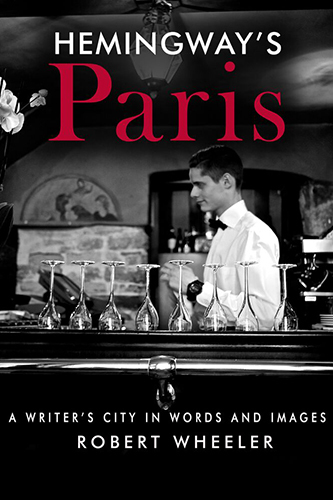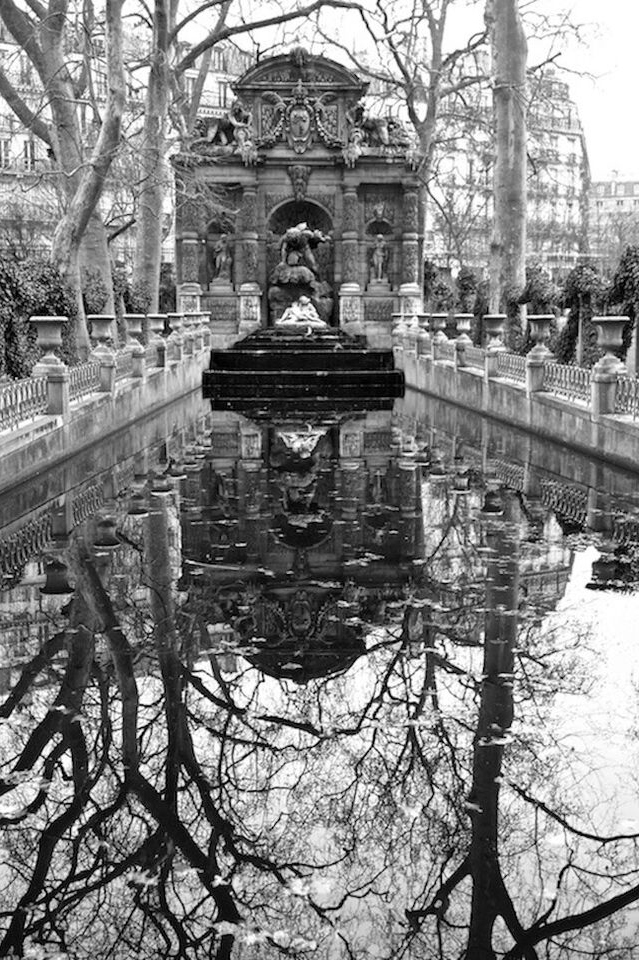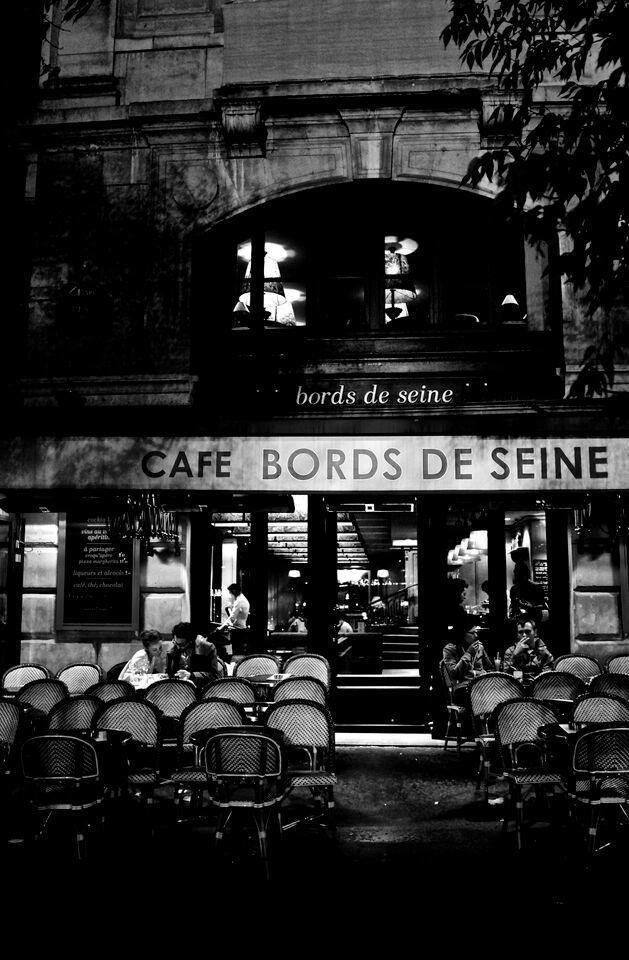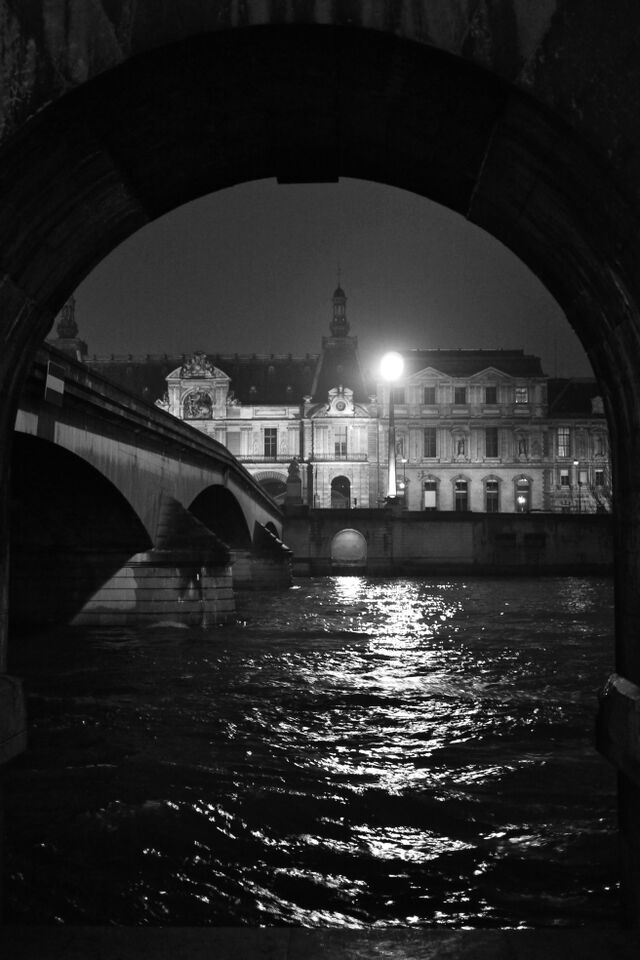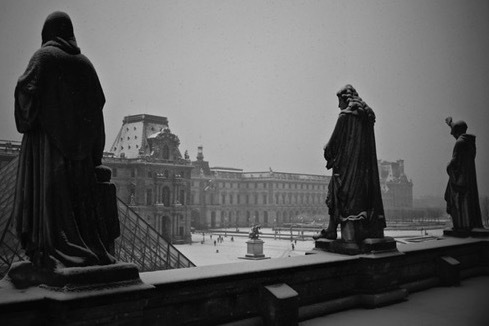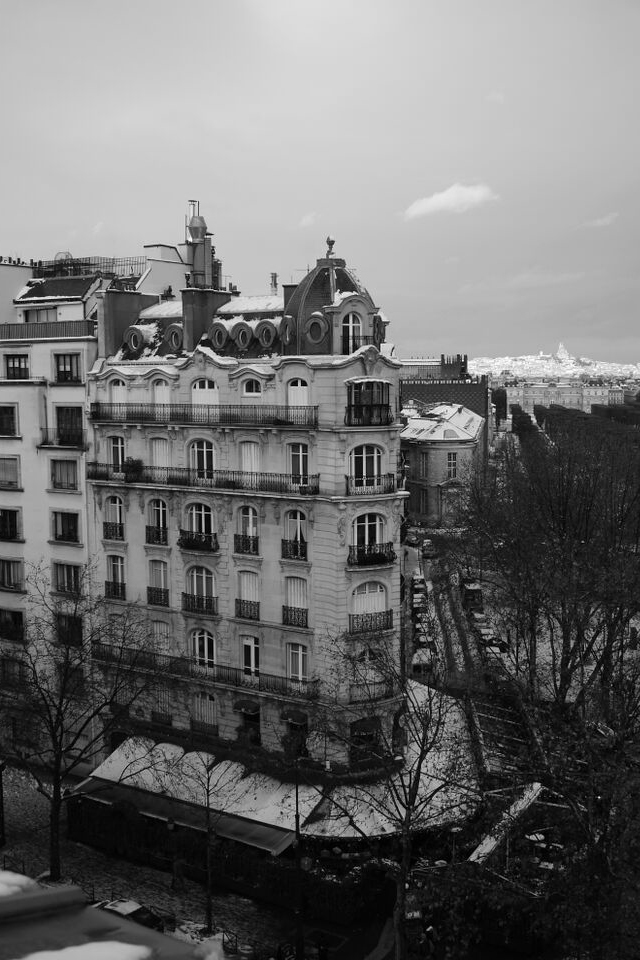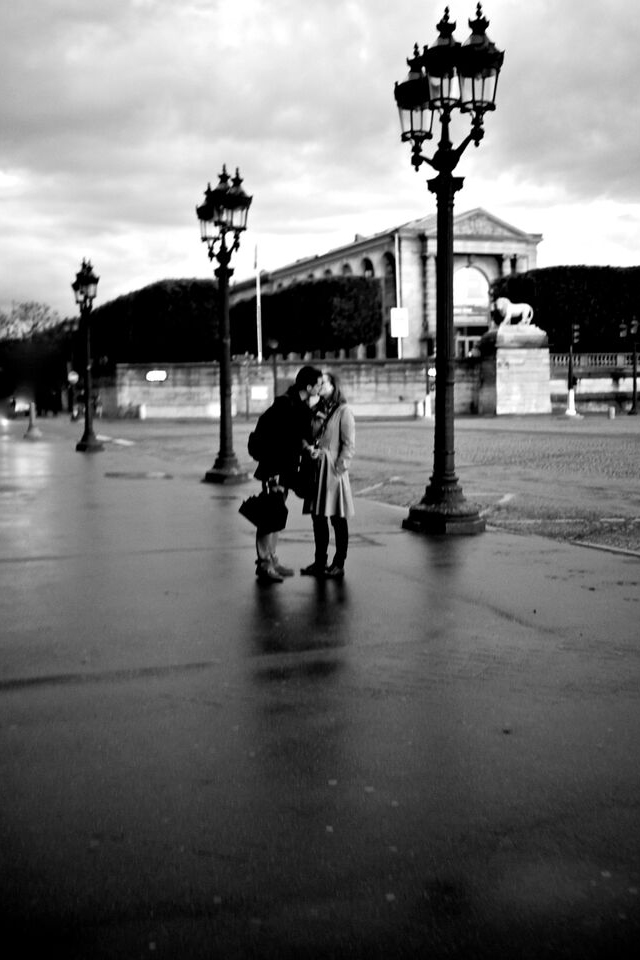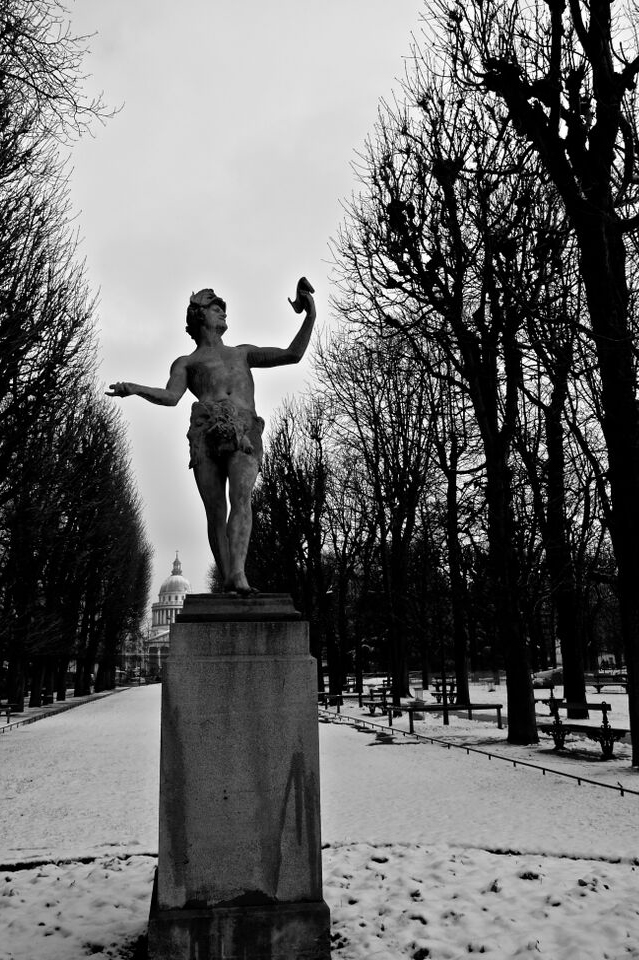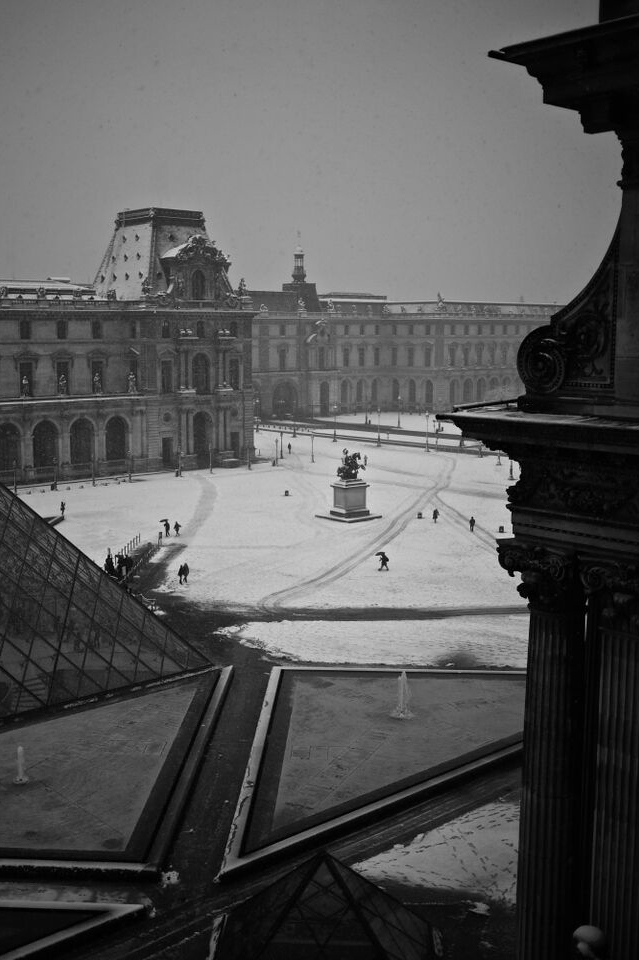A Journey through Hemingway's Paris
By
Text and Images by Robert Wheeler
Inspired by Hemingway’s transcendent writing, Robert Wheeler has traveled to Italy, Spain, Africa and France to discover the places where the author thrived. In his book Hemingway’s Paris: A Writer’s City in Words and Images, Wheeler’s entrancing black and white photos accompany the tale of Ernest Hemingway’s life in Paris. Take a journey through Hemingway's time in The City of Light via the places where Hemingway dined, conversed and found inspiration for his brilliant literature. Through Wheeler's insight into Hemingway's favorite spots and people, you'll get a little taste of why it was Paris that ultimately was Hemingway's favorite city (and how you can rediscover it today).
Why Paris?
Hemingway’s final act in his prolific life was the writing of A Moveable Feast, his memoir. A memoir filled with clarity yet deeply shrouded in despair. This would be the final piece of writing he would work on before taking his life on July 2, 1961. In Feast, Hemingway returned to the city he loved most, Paris. It returned him to the friends and influences who helped form his modernist sensibilities, and it returned him to a time in his life that, more than any other, inspired him to create. It was Paris, too, that returned him to the woman he loved most, Hadley. Inspiration. Craft. Influence. And love. These were the four aspects, at the end of his life, that Ernest Hemingway felt he had lost for good.
The Seine
So much happens and many, including Hemingway, would agree that much of life is experienced outdoors in Paris. In his eyes, the concrete and cobblestone pathways that cascade down to the river were filled with as much richness and imagery as were the great museums. Hemingway found it was easier to think through the complexity of his work while he walked along the historic and inspiring passageways that line the banks of the reflective Seine.
Frommer's Tip: A little geography lesson: the Seine is a nearly 500-mile-long river that runs straight through Paris. In the middle of the river, Île de la Cité was the very first part of the city to be settled. Along with Île de Saint-Louis, it's one of the two last natrual islands in the Seine and is home to those cobblestone pathways Hemingway loved. Take a walk along the river and across beautiful bridges to see not only the Seine but also to discover these little islands.
The Cafés
Late at night, with the streets emptied and calmed, the glow from the cafés fill the city. Though most were in for the evening, the hope remained that someone would wander in for a nightcap or espresso in such a clean and well-lighted place. In the early years, Hemingway, after a long day’s work, would take his Hadley to hidden places such as this to discuss ideas he had for weekend excursions outside of Paris. She was a supportive wife, excited to be in this new city, and far away from her predictable St. Louis life, with a man whom she loved and admired. A man she believed would one day rise above all other writers of the Twentieth Century.
Frommer's Tip: As we wrote earlier, a walk along the banks of the Seine can expose you to some incredible parts of Paris, just like this little café. Café Bords de Seine overlooks monuments like Notre Dame and offers an authentic French atmosphere and menu. We recommend stopping by during the warmer months for a meal on the terrace.
Frommer's Tip: As we wrote earlier, a walk along the banks of the Seine can expose you to some incredible parts of Paris, just like this little café. Café Bords de Seine overlooks monuments like Notre Dame and offers an authentic French atmosphere and menu. We recommend stopping by during the warmer months for a meal on the terrace.
Île Saint-Louis
Walking alone along the north side of the Île Saint-Louis, Hemingway experienced inner conflict under the weight of both his personal indiscretions and his professional aspirations. There were always unanswered questions that awaited explanation. Sitting alone on this stone bench, surrounded by Paris’ scrupulous attention to detail, something terribly important was missing. Was Hemingway alone or was he, and were they, all one? Both are thoughts contemplated by a man who was highly sensitive and sensory– one speaking to his loneliness and regret, and the other to his uncertainty.
Frommer's Tip: Walking along Île Saint-Louis today is definitely more touristy and crowded than in Hemingway's day, but that doesn't mean there isn't still plenty of reason to take the stroll. Chockablock with handsome architecture and historic sights, it's also home to dozens of unique stores and boutiques.
Frommer's Tip: Walking along Île Saint-Louis today is definitely more touristy and crowded than in Hemingway's day, but that doesn't mean there isn't still plenty of reason to take the stroll. Chockablock with handsome architecture and historic sights, it's also home to dozens of unique stores and boutiques.
Pont Royal
So much of who Ernest Hemingway was in those early years in Paris can be felt along the river’s edge. At times, he believed he was in over his head, specifically regarding his lack of a formal education. He was constantly looking for the connection that existed between ideological discourse and concrete reality. Hemingway, however, had a fighter’s heart and work ethic, and found he was able to play to his strengths in spite of being surrounded by older, Ivy Leagueeducated and more experienced contemporaries. It is the depth of Hemingway’s submersion in Paris that taught him many lessons he would carry throughout his life.
Frommer's Tip: From this view beneath the Pont Royal bridge, Hemingway could see the moonlight reflecting in the Seine. Pont Royal is the third oldest bridge in Paris, in the North towards the Louvre. It crosses the Seine to connect the Right Bank to the Left Bank. Right by the bridge is L'Hôtel Pont Royal. The hotel's basement bar has been hosting regular literary meetings since the 1930's and is definitely worth stopping in for a drink.
Frommer's Tip: From this view beneath the Pont Royal bridge, Hemingway could see the moonlight reflecting in the Seine. Pont Royal is the third oldest bridge in Paris, in the North towards the Louvre. It crosses the Seine to connect the Right Bank to the Left Bank. Right by the bridge is L'Hôtel Pont Royal. The hotel's basement bar has been hosting regular literary meetings since the 1930's and is definitely worth stopping in for a drink.
The People
Some believe Stein and Pound to be Hemingway’s literary Mother and Father. Together, they saw in Hemingway enormous promise, and under watchful eyes they helped him develop a literary network and platform from which he could be recognized. Both Stein and Pound provided him the necessary advice and acceptance he needed to become one of the brightest young stars in their community. Their ties to Hemingway were braided with intimacy and instruction, and, like most parental relationships, they instilled in him the confidence he needed to flourish.
Frommer's Tip: These statues of French scholars sit outside the glass exterior of the Louvre and can be seen from within the museum. The Louvre is a classic stop on any Paris trip; for more details on how to visit, click on the link above. While the glass pyramid was not around in Hemingway's day, the museum itself has been around since 1792.
Frommer's Tip: These statues of French scholars sit outside the glass exterior of the Louvre and can be seen from within the museum. The Louvre is a classic stop on any Paris trip; for more details on how to visit, click on the link above. While the glass pyramid was not around in Hemingway's day, the museum itself has been around since 1792.
The Rotonde
The players in 1920’s Paris could be spotted, quite by intention, at the Rotonde. This was the café in the city from which to be seen. Hemingway, though, preferred only to look in and not stop. He chose to be an outsider, to move past the Rotonde quickly, often varying his routes to avoid falling into lazy habits. He liked the anonymity and honesty less public cafés afforded him, for in those places he could be himself and lose himself in his stories—stories that were written by a man yet untouched and yet unburdened by fame.
Frommer's Tip: There are several cafes in Paris by the same name. The original Rotonde from Hemingway's era is found on Boulevard du Montparnasse and has been a cultural hub renowned restaurant since 1911.
Frommer's Tip: There are several cafes in Paris by the same name. The original Rotonde from Hemingway's era is found on Boulevard du Montparnasse and has been a cultural hub renowned restaurant since 1911.
The Closerie
Hemingway believed that seven-eighths of a story should remain hidden beneath the surface. He referred to this as the Iceberg Theory. The emotional strength of any story should be felt and not necessarily seen. The Closerie Lilas, the café where Hemingway sometimes worked, was by location and appearance the tip of the iceberg that comprised the Left Bank of Paris. From a higher perspective, one can see the Boulevard Montparnasse reaching down to the Rue de Vaugirard, over to the Boulevard Saint-Michel, and eventually returning to the tip of the iceberg—the Lilas. This theory is much more than just metaphor. It is a symbol of the Paris Hemingway occupied, and it is symbolic of those artists who encompassed the Modernist spirit and that worked and lived on the Left Bank. All who influenced Hemingway are considered to be the foundation of his literary iceberg.
Frommer's Tip: The Closerie is famous for it's historical presence of huge political and creative minded figures from Appolinaire to Picasso. The staff even named their legendary beef tenderloin after Hemingway and have plaques noting where he liked to sit during his regular visits. History aside, the restaurant today is still thriving. In order to appeal to the modern-day masses, the place is split into three places: the main restaurant a piano bar and a casual brasserie. Check out all three or go for the one that seems to suit you the best—no matter what, you're in for a delicious meal and an atmosphere pulsing with history.
Frommer's Tip: The Closerie is famous for it's historical presence of huge political and creative minded figures from Appolinaire to Picasso. The staff even named their legendary beef tenderloin after Hemingway and have plaques noting where he liked to sit during his regular visits. History aside, the restaurant today is still thriving. In order to appeal to the modern-day masses, the place is split into three places: the main restaurant a piano bar and a casual brasserie. Check out all three or go for the one that seems to suit you the best—no matter what, you're in for a delicious meal and an atmosphere pulsing with history.
The Romance
Ernest and Hadley shared in a city alive with the Modernist spirit. Hadley, when engaged to Ernest shortly after his return from the Italian Front in World War I, said that the world was a jail from which they would together break free. In Paris, they met many fascinating characters and counted on one another for strength and direction. Hemingway marveled at the power of love that was felt in a city where couples are seen everywhere and where romance flourishes. While couples abound on many of the pages of his work, eventually, in his personal life, the concept of a lasting relationship with another seemed to elude him.
Frommer's Tip: Cliched but true, Paris abounds with places that foster romance. La Tour d'Argent, a penthouse restaurant with a breathtaking view of the Seine, is a classic place to pop the question, though you can do so with as much brio over a picnic lunch in the the Luxembourg Gradens.
Frommer's Tip: Cliched but true, Paris abounds with places that foster romance. La Tour d'Argent, a penthouse restaurant with a breathtaking view of the Seine, is a classic place to pop the question, though you can do so with as much brio over a picnic lunch in the the Luxembourg Gradens.
Fontaine de Médicis
The final dark blow loomed large for Ernest and Hadley... their divorce. The Fontaine de Médicis, in the Jardin du Luxembourg, is set along the path that once shortened the walk Ernest took home to his love. The weight of Hemingway’s success spilled over into his once uncomplicated world, and fame made him larger than life. This is the story set in Paris that has been written and lives within the pages of Hemingway’s Feast. This is the memoir’s true height, and this is the story that breaks the hearts of its readers.
Frommer's Tip: This famous fountain can be found in the Luxembourg Gardens.
Frommer's Tip: This famous fountain can be found in the Luxembourg Gardens.
The City of Light
Love. Looking back upon his life, Ernest Hemingway said that Paris was the city he loved best in all the world. He wrote that when he and Hadley were young there, nothing was as simple as it had seemed. He believed that nothing—not being poor, not having sudden money, not the moonlight, not right or wrong, not even the breathing of someone who lay beside you in the moonlight—was simple in the City of Light. In the end, Hemingway found himself alone there. Alone in the city where he and Hadley were once in love with one another, and where they were very happy.
The Gardens
The Jardin du Luxembourg is at its most extraordinary in winter. Hemingway believed the Jardin was more significant set against the heaviness of cold. Once stripped of its bloom, it became easier to focus on the beauty of the park itself. Hemingway wrote that a piece of him died each year when the leaves in Paris fell from the trees and the branches were barren. Like this photograph of the sculpture of The Actor, Hemingway himself evolved into one—a man with a public persona that differed somewhat from his true nature. Hemingway’s romantic and sensitive side has always played a lesser role to the critics who never experienced the man and writer who lived, loved, learned and worked in Paris.
Frommer's Tip: In addition to exquisite plantings (pear trees shaped with geometric precision, tapestries of blossoms in the spring) the gardens are notable for their splendid ancient Roman-inspired sculptures and fountains. To read more about the Luxembourg Gardens, click here.
Frommer's Tip: In addition to exquisite plantings (pear trees shaped with geometric precision, tapestries of blossoms in the spring) the gardens are notable for their splendid ancient Roman-inspired sculptures and fountains. To read more about the Luxembourg Gardens, click here.
Because: It's Paris
In Paris, destinations are filled along the way with small, serendipitous images. Whether walking in solitude or with someone, the city’s enduring physical beauty will surprise and imprint itself upon one’s memory. Hemingway used the city, its boulevards and streets and pathways, to both inspire and compose himself. Life as a young writer surrounded by the Modernist experiment was challenging. The loveliest walks, those that easily conjure up impressions of Hemingway’s city, can be experienced in the Luxembourg, the Royal, and the Tuileries gardens, but always, walking throughout this city, under its dramatic sky, is significant and is symbolic of Hemingway’s time in Paris.





